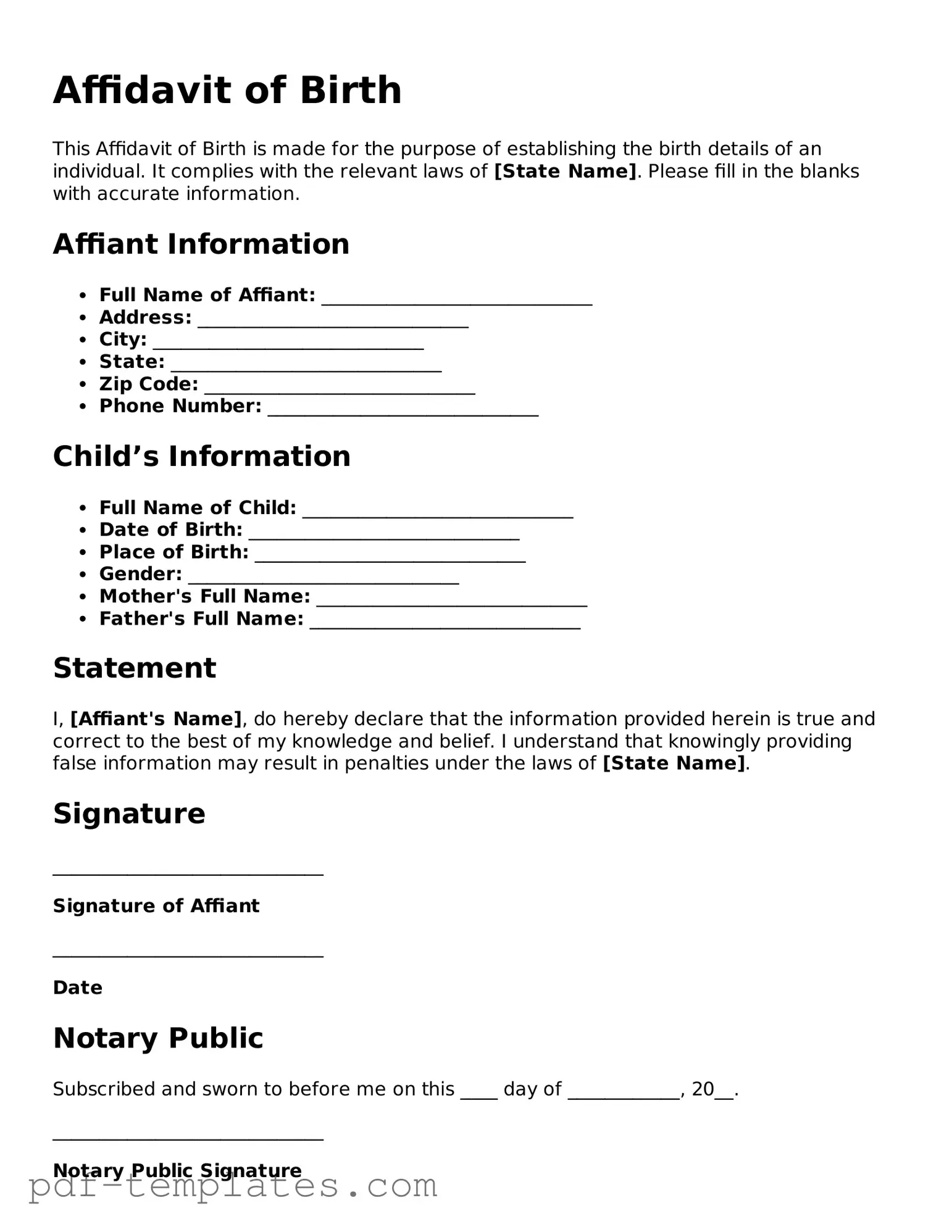The Affidavit of Birth form is similar to a Birth Certificate in that both documents serve to officially record the birth of an individual. A Birth Certificate is typically issued by a government authority and includes details such as the name, date, and place of birth, along with the parents' names. In contrast, an Affidavit of Birth may be used when a Birth Certificate is not available, providing a sworn statement that attests to the facts of the birth, often supported by witnesses.
An Adoption Decree shares similarities with the Affidavit of Birth in that both documents establish a legal relationship regarding an individual's identity. The Adoption Decree is a court order that finalizes the adoption process, granting the adoptive parents legal rights over the child. Like the Affidavit of Birth, it contains vital information about the child and their new family but focuses on the legal change in guardianship rather than the birth event itself.
The Certificate of Live Birth is another document that parallels the Affidavit of Birth. This document is usually issued by hospitals at the time of birth and provides essential details about the newborn. While the Certificate of Live Birth is often more formal and recognized by government entities, the Affidavit of Birth can serve as an alternative when formal documentation is lacking, especially in informal or emergency situations.
The Social Security Card is also similar in that it is crucial for establishing identity and citizenship. While the Affidavit of Birth verifies the birth details, the Social Security Card provides a unique identification number for taxation and benefits purposes. Both documents are essential for accessing various services and rights within the United States.
A Passport can be compared to the Affidavit of Birth as both serve as identification documents. A Passport requires proof of citizenship, which can often be established through an Affidavit of Birth when other documentation is unavailable. Both documents play significant roles in travel and identification, although a Passport is more comprehensive in its use as a travel document.
The Driver’s License shares a similar purpose in identifying individuals. While a Driver’s License is issued after a person has met certain requirements, it often requires proof of identity and residency, which can be supported by an Affidavit of Birth. Both documents are widely accepted for identification in various situations, such as banking or travel.
The Voter Registration Card is another document that has a connection to the Affidavit of Birth. Voter registration often requires proof of identity and residency, similar to the requirements for obtaining a Driver’s License. An Affidavit of Birth may help establish eligibility to register, especially for those who may not have a traditional birth certificate.
In addition to the forms discussed, it's also important to consider the Single Status Affidavit, which serves a distinct purpose by confirming an individual's single status when applying for marriage. This document can be especially relevant for those preparing for international marriages, making it essential to understand how to obtain and complete it correctly. For more information, you can visit https://topformsonline.com/single-status-affidavit.
The Medical Records of a person can also be likened to the Affidavit of Birth. Medical records document an individual’s health history, including birth details. While the Affidavit of Birth provides a sworn statement of birth facts, medical records can serve as a secondary source of information, especially when verifying age or identity for medical purposes.
Lastly, the Immigration Documents, such as a Green Card, are similar in that they establish a person's legal status in the United States. An Affidavit of Birth may be used to support applications for immigration benefits by providing proof of identity and birth details. Both types of documents are essential for navigating legal processes within the U.S. immigration system.
